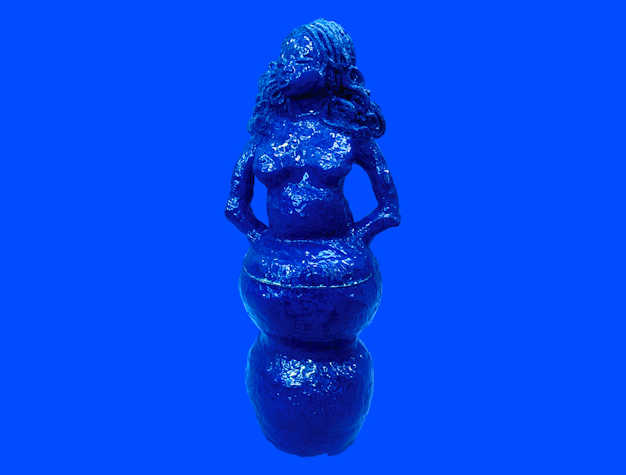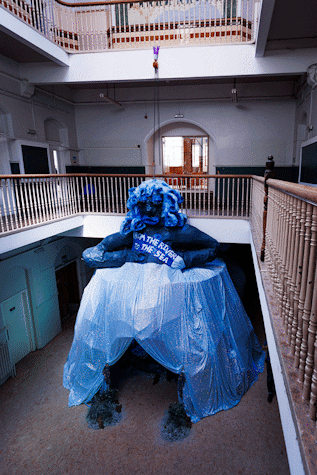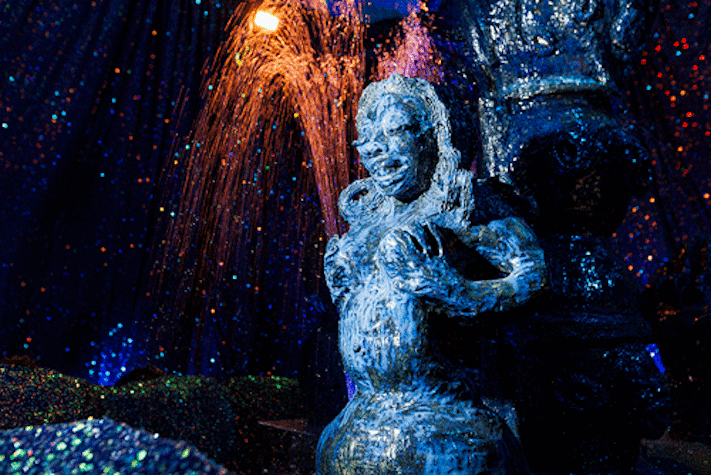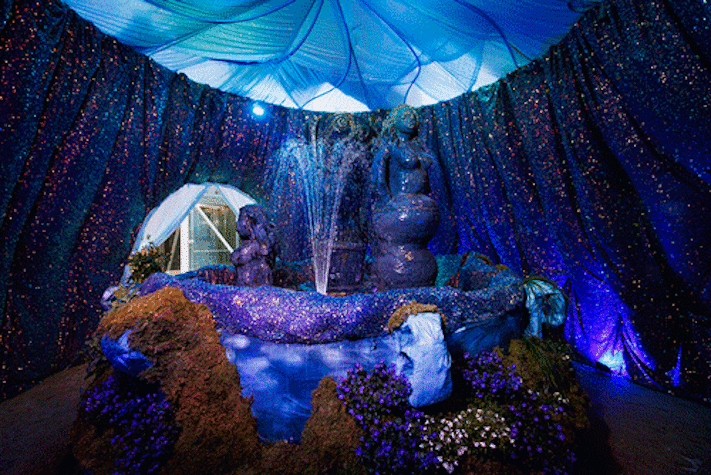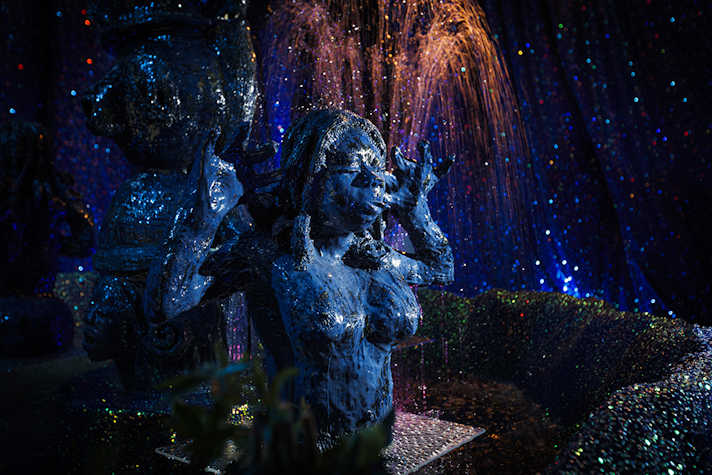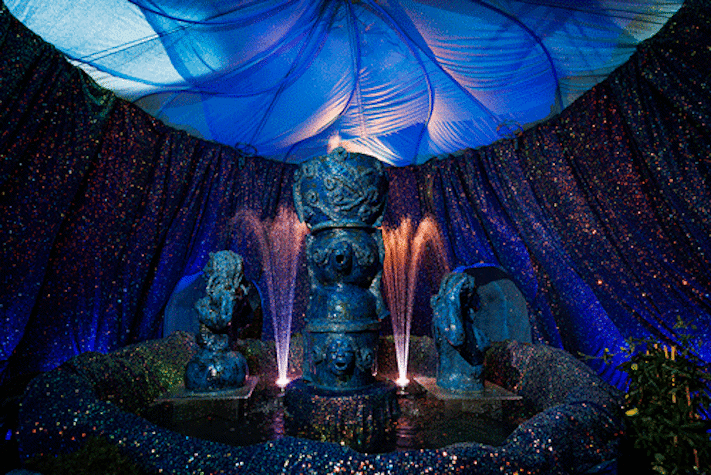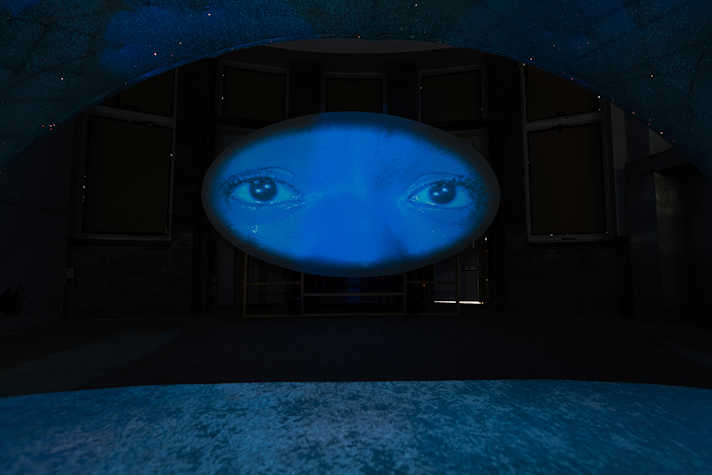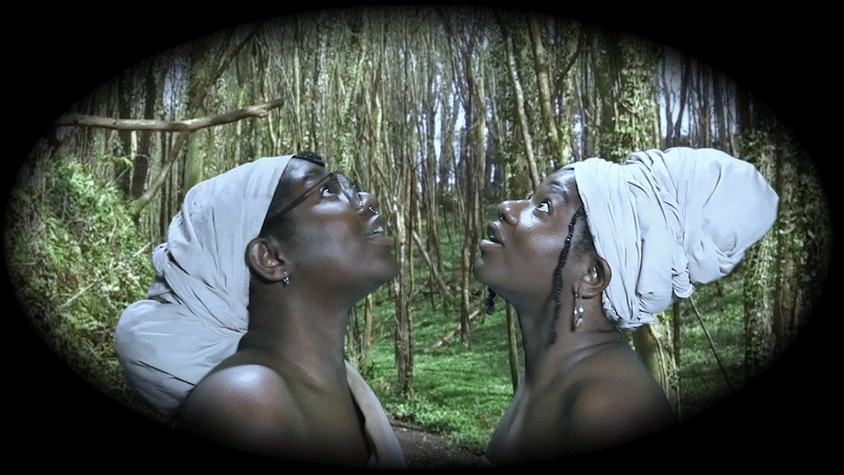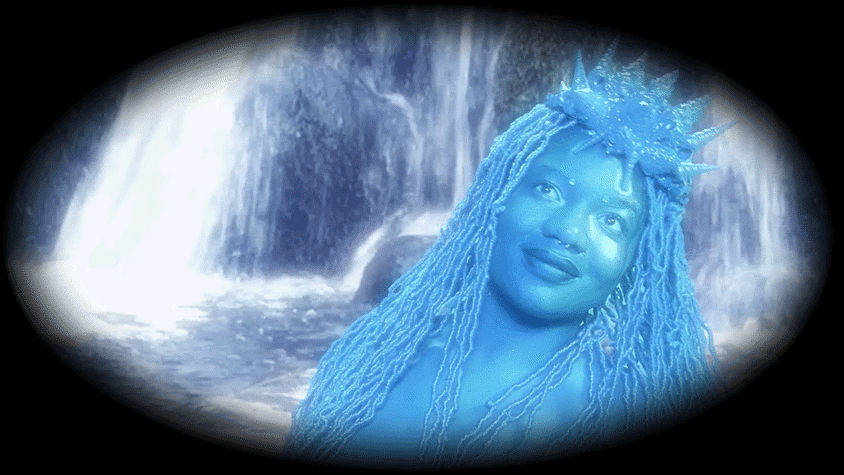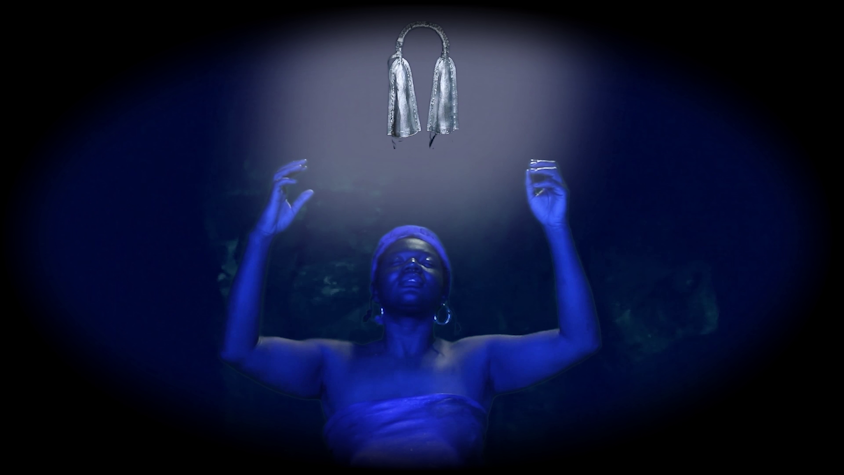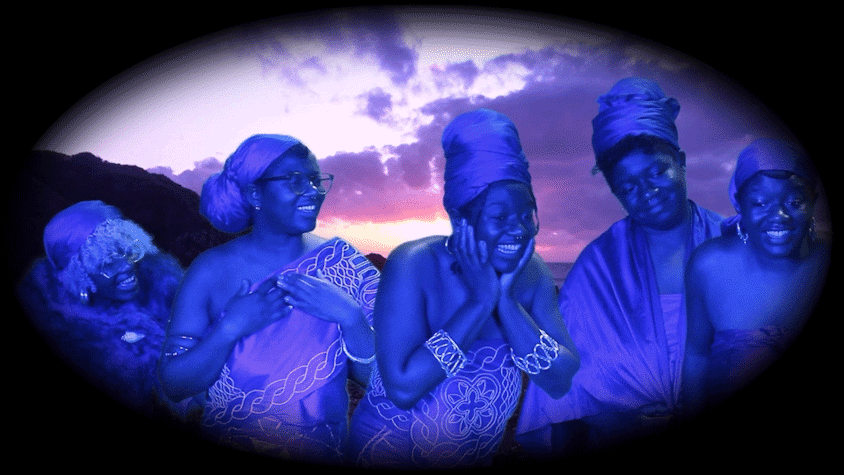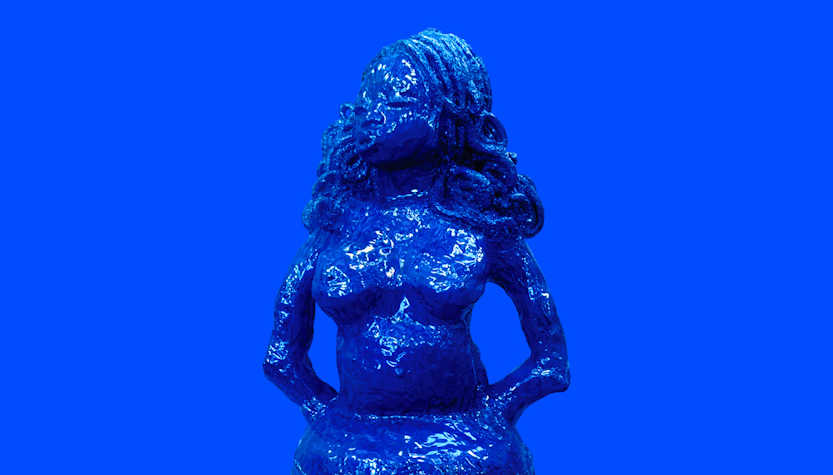fir gorma
- Dates and Opening times
Fri 7 – Sun 23 June
Fri 7 June, 10am – 5pm
Sat – Sun, 10am – 5pm
Mon – Fri, 12 – 5pm- Venue
5 Florence Street
G5 0YX- Participants
- Josie KO Kialy Tihngang
- Presented by
Josie KO & Kialy Tihngang
- Supported by
Glasgow International with funds from the Scottish Government’s Festivals EXPO Fund and Assumption Studios
- Accessiblity
Good Access: The venue has ramped or level access and/or lifts to access upper floors
Toilets: Accessible Toilet
fir gorma is a collaborative exhibition of new work by artists Josie KO and Kialy Tihngang that draws on their research into Black British history. The Old Irish term ‘fir gorma’ translates as ‘blue men’. References to fir gorma in ancient Irish chronicles are thought by historians and folklorists to refer to North African people enslaved by Vikings in the 9th century and brought to Ireland and the Scottish Hebrides. In key texts such as Peter Fryer’s Staying Power: The History of Black People in Britain and Donald Mackenzie’s Scottish Folk Lore and Folk Life: Studies in Race, Culture and Tradition, writers have speculated on these figures’ presence on the islands and the mythologies connected to them.
As Black English women, Josie and Kialy have experienced the constant questioning of their existence in Scotland, intensifying their nebulous sense of national identity. Their encounter with records dating the presence of Black people to precolonial 9th century Scotland was significant, inspiring them to produce a body of work which speculatively contextualises archival material through figurative sculpture and video installation. Using the records as sites for daydreaming and imagination, they demonstrate how some ‘blue men’ escaped captivity, fled to an uncharted Scottish island, and formed a maroon clan. They imagine a rich lore and material culture for this clan, expanding on this neglected piece of Black Scottish history.

